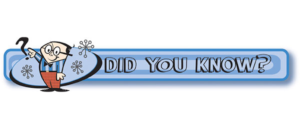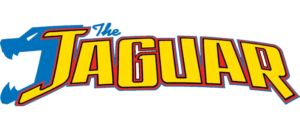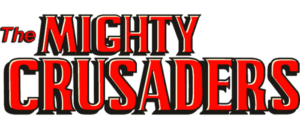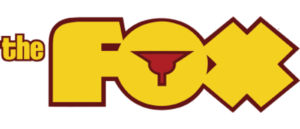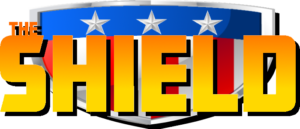Mike Gold Interview
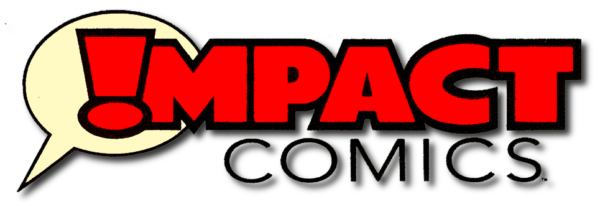
I have been told that you were the Impact guru. That you pushed for “years” to get DC to lease the rights to the characters. This true?
Sort of. I pushed for years for DC to establish a line of super-heroes that would primarily appeal to new and younger readers – younger than the older teen and young adult market DC was pursuing at the time. Quite separately, DC’s newsstand marketing director Matt Ragone (now head of Marvel’s distribution) was pushing for this same thing as a means of bolstering sagging newsstand sales. Matt and I developed together the basic Impact philosophy.
Given the high cost of this experiment, DC was disinclined to go with a line of original properties, and at least one group editor felt such new properties should be made competitively available to the mainstream universe. The Impact team thought the characters, be they original or revivals, should be created with this new audience in mind and, therefore, wouldn’t fit easily into the mainstream universe.
Restricted to revivals, I don’t recall why we decided upon the MLJ characters except for the fact that the Tower superheroes were under some legal confusion.
Did you have plans for the THUNDER Agents?
No. I love those characters and I consider the 1960s series to be a high water mark in a crowded pool. But the concept’s really set in that era, and I think in order to revive them you’d have to kind of turn them into something else.
However, I think there’s a small core of exceptionally talented people available today who could look at these characters and concepts and bring them into the 21st century. Again, it would take a lot of money and a genuine long-term commitment, but I think it could be done. I didn’t feel that way a dozen years ago as those types of writers and artists were preparing their own coreator-owned properties — the medium was entering a boom period at that time.
The key to T.H.U.N.D.E.R. Agents in the 60s was that a highly talented pool of people created a symbiotic universe that they, as creators, really wanted to play in. By and large these were people who weren’t having as much fun working for the established comic book companies — certainly guys like Wally Wood, Steve Ditko and Mike Sekowsky were less than thrilled about their opportunities at DC and Marvel at that moment in time. These types of conditions exist today. Of course, you could assemble the same type of group today and have them create something original that would be just as good, but I think the nostalgia/fandom factor accounts for something.
Coincidentially, the guy who ran Tower Comics — Harry Shorten — was one of the first editors over at Archie and he co-created the original Shield.
What was your first introduction to the Crusaders (pre-Impact)?
Well, I’m four days older than water, so my first introduction to the MLJ heroes was back in The Double Life of Private Strong #1 and The Adventures of The Fly #1. It was also my first introduction to Joe Simon and Jack Kirby. I think I was seven years old, and I was in fanboy heaven. I actually remembered reading Fantastic Four #1 when I was barely eleven and remembering the artist was the same guy who did The Shield four years earlier.
I don’t have any particular fondness for the golden age material – outside of the names and the costumes, which were great. But, then again, the names and costumes of new superheroes are two of the most important elements. As such, these characters continue to have a lot of potential for a new and younger audience.
The main ideas for the Impact line. Were they yours, or did you allow your writers to propose whatever they wanted and go from there?
Editorially speaking, the mood and the tone of the Impact titles were developed in phases. The first phase consisted of bringing the team together: editors, writers, artists. As group editor I was responsible for this, but as we brought in editors they made their recommendations as well. The second phase consisted of sharing the marketing philosophy with the team and having writers and artists, in consort with their editors, develop first draft proposals. Armed with these proposals, the entire editorial team gathered for a two or three day (I forget) editorial retreat to hash out the line. DC President Jenette Kahn and Editorial Honcho Dick Giordano participated in this retreat and took an active role in the development. The third phase was the final individual title development based upon the first drafts and the input from the editorial retreat, and that was handled by the individual title editors and their writers and artists.
Did you hand-pick the creators that were involved in the Impact series?
I think it’s fair to say I played the biggest role in assembling that team, but the other creators, editors and supervisory staff (primarily Dick Giordano and, to a lesser extent, Jenette Kahn and Paul Levitz) certainly had their say as well.
Can you give me your thoughts on the late Mike Parobeck?
I’d known Mike from our Chicago days — I’m still a major Chicago-booster, and I spend about two or three weeks a year back home (indeed, I just returned). It’s common to go out of one’s way to say nice things about people who have died, but in Mike’s case they’re all deserved. He was a truly talented, sweet, honest, gifted guy. Had he moved to New York or Los Angeles at the right time and played the game the right way, he probably would have been one of the Image creators. The fact that he did neither was to his credit.
I had dinner with Len Strazewski last week, and Mike’s name came up once again. He really was a great guy.
Who came up with the visuals and background for Fireball?
I don’t recall — it’s been a long time. I really liked the idea of a southern hero, as virtually all heroes had been bland non-descript WASP northerners.
Did you already have the main 6 titles planned before the “Impact Conference”?
That’s the way I recall it, although I could be wrong. Those initial six each addressed a different substrata of the potential audience. The Shield wasn’t The Fly, The Web wasn’t Black Hood, and so on. Those directions were worked out, those substrata defined, at that editorial retreat, and we affirmed those directions and made some adjustments at that second editorial retreat a year later.
Grant Miehm said he was slated to be the Jaguar’s writer until he turned in his Shield proposal. Were there any other different creative lineups planned at the beginning?
I don’t recall Grant being slated to write The Jaguar, although that certainly could have been the case.Each title had its own creative team and each creative team wrote its own “bible” before we started work, and as I recall the bible-writers were the initial creative teams when we got into print.
It’s been said you had “many irons in the fire” regarding possible “new” Impact titles. Any in particular you remember?
As we were working on the individual titles, we kept in mind which MLJ characters had yet to be used. These characters could have been introduced in established series and be “spun-off” into their own titles later, and I think we were building towards one or two of those. Many Impact writers and artists had ideas for spin-off characters. A few people indicated interest in Steel Sterling, which surprised me as I thought it had been MLJ’s least defined character. I know a few would have jumped at the chance to do The Hangman.
There were allusions to an eighth Impact series (LONG before Crucible). Can you eloborate on what it was to be?
I don’t recall that specific decision having been made. Some of our creators had made suggestions, but I don’t recall our making any commitments at our second editorial retreat the following year.
Some of the founders (Tom Lyle, Tom Artis, etc) at Impact left before Impact’s 1st birthday. What were your thoughts on this?
To their credit, most of the talent stuck with their series until Yogi Berra’s Axiom was clearly fulfilled. I don’t recall Tom Lyle’s specific reason for leaving – I like Tom so whatever reason he had didn’t seem to bother me. Tom Artis left because he got into a significant disagreement with Michael Golden, who was our cover editor. It was a respectful disagreement, and I understood his decision. Tom Artis is one of the great undiscovered artists out there – if he had been doing an X-title at the right time he would have been a founder of Image Comics.
And do you think that was one of the causes of the downfall of Impact?
Clearly, without the massive promotional and marketing support that was needed to attract a new audience, the line couldn’t make it. The decision not to supply that support was made as we were completing our earliest issues, so some of our line editors had little continuing enthusiasm for improving the books.
These were new characters in a new universe for a new audience. It was going to take a lot of work and a lot of marketing support and a healthy amount of time. Given the fact that it never got past the initial stage I think we did a pretty good job – at that time we received more mail on the individual Impact books than we did on most other titles (we checked), and most of this mail was from younger readers who were not regular DC comics readers.
When Matt [Ragone] left DC for Marvel, the Impact line got orphaned. We were told this by DC’s marketing director in no uncertain terms (and I’m putting it politely) in a meeting in Dick Giordano’s office with two other people. Impact required – and was designed to require – a lot of marketing support in order to attract that new audience. So, after that meeting, the feeling was that Impact was doomed and the talent was wasting its time on books that would go nowhere – they certainly wouldn’t generate royalties. The editors involved also saw that portion of their careers dead-ended .
I don’t particularly fault a corporation for changing its direction and priorities. In that sense Impact was a fun opportunity, and I’m grateful to have been given that opportunity.
Impact, as much as I could tell, had practically flawless continuity. Congratulations on keeping such a good rein on the characters (although it’s 10 years late…)
Thanks. It’s fairly easy to keep continuity going when you’ve got a small creative group and only four editors (including our cover editor), and it’s a lot easier to maintain continuity when you begin with a clean slate.
What was your opinion of Impact Comics, as a whole–during your tenure there?
Like I said, I liked parts of everything and a lot of most. Given a little time I think all would have been first rate. The Web was the hardest to establish – it was intended to be the lynchpin for the Impact continuity, but we never got that far.
What caused your departure from the editorial post at Impact?
My job was director of development, so I went on to develop other projects just as I had done in the past at DC. Quite frankly, when the air was let out of the Impact line I began to look past DC and I had signed a letter of intent to move on to another operation about a year before I left the company, so my last year was spent mostly winding up projects. I created a new project at Dick Giordano’s request but I declined to make a personal commitment to it as I was contractually obligated to move on.
With a decade of hindsight, if I could have changed any one thing at Impact I would have placed one person as the sole line editor of the line so it could be guided by a single editorial vision. Well, I would have had an Impact art director as well, in order to better develop a more fully realized unique look. Of course I would have placed myself as that sole editor: it’s as close becoming Doctor Doom as you could get in comics!
What exactly were your duties as editor of Impact?
I mentioned my role in guiding its creation – we really didn’t stick around long enough for my duties to evolve to the next level.
The Coming of the Crusaders. Was this your idea?
I had moved on to other projects by that time. Jim Owsley and I discussed it quite a bit, but I believe it was really his baby.
Your opinion: Why did Impact Comics fail to make it past its second birthday?
I think I’ve addressed this above: it needed a lot of support and the company decided to go in other directions, which, of course, is its right.
Overall, do you think Impact Comics was a success?
It was a success in that, to the limited extent it was promoted, we seemed to achieve our major goal of attracting a new and younger audience — people like yourself. Financially, any project like that would have taken years to make any real money (comic book publishing is a marginal business at best, without merchandising and licensing revenue), but it didn’t do badly. DC kept publishing the books for quite a while. When they quit they kept on paying Archie the licensing fee even though Archie tried to make a deal to get it back, essentially telling DC they could stop paying if they returned the rights. DC declined, so I infer financially DC did okay with the books, at least against their own projections.
Is there any specifics you can give to help shed some light on DC’s deal with Archie?
One rule that sticks to my mind a dozen years later was that we were always obligated to show characters using seat belts when in cars. Archie always had a major commitment to social service, and since I’ve been in that line of work for over 30 years I respected that commitment. It was a good thing to do for our intended younger audience.
The only other commitment or restriction I recall was that the characters be “Code-approved.” I wanted the contract language changed to “Code-approvable” because at that time DC’s editorial director Dick Giordano really, really wanted to quit the Comics Code.
DC had a contract that guaranteed them use of the characters for a certain period in exchange for a guaranteed minimum payment. I don’t recall the terms, and I’m sure there was an automatic renewal should a certain revenue level be maintained. As I noted above, DC kept the license through the original period well after they decided to cancel the last title. I suspect DC still owns the “Impact” name — to the extent that it hasn’t been used in trade for a long time and might be perceived as up for grabs.
As I recall, and I could be completely wrong here but for some reason it sticks in my mind, after the DC/Archie deal expired Joe Simon regained control of The Fly and of the Simon/Kirby version of The Shield — although not the name The Shield. I think Joe’s calling it “Shieldmaster” on his website.
Did you think Crucible was the right way to go to re-tool and “save” the line?
I wasn’t involved in the line at the time except as a consultant to its editor Jim Owsley (Christopher Priest). What Jim (he was still Jim at the time) wanted to do made sense to me, and I had complete faith in him. I was the guy who hired him as an editor at DC – I hope he’s forgiven me for that by now!
Many people (older readers of the previous incarnations, mostly) slam the Impact line, saying, “they ruined the characters.” What would be your response?
People say that with every make-over. I know a few older comics fans who I respect greatly who feel that way about the Barry Allen Flash and the Hal Jordan Green Lantern – they would have preferred a revival of the Jay Garrick Flash and the Alan Scott Green Lantern. And to a certain extent I feel that way about one or two of the “revivals” done in the past decade –certainly the “everything you knew is wrong” approach has grown real old for me. But I’ve lived through countless revivals.
“The Impact line was made for kids, not adults.” Your thoughts on that common statement?
That about says it all. The idea is that younger readers – say eight to thirteen – have a hard time getting into comics: if you like Batman or the X-Men or any of the half-dozen top franchises the cost of entry is extremely high. More important, the commitment to reading a lot of closely interrelated titles is exhausting for a newcomer. The idea was that you could read any of the Impact titles as a stand-alone without feeling like you should buy a lot of titles you don’t want. I still believe in that philosophy in order to attract that new and younger audience.
I know this may be a tad bit involed, but is it possible for you to give some personal thoughts/opinions on each individual title?
That’s real hard — I think I’d have to go back through the whole stack, which I don’t have available to me right now (let alone the time to do so).
Which Impact title was your favorite? (artwise, storywise, characters, etc…)
Well, that’s a loaded question. I liked parts of all the titles, and I outright liked most of them. But I’ll bite the bullet and say that Black Hood was my personal favorite. No slight to the others intended.
Can you give us a short bio of yourself?
Hmmm. That’s a whole lot of stuff. I’ve been a freelance and staff writer for a variety of newspapers and magazines since 1967 (I was 17), and a radio broadcaster (disc jockey and newsman) between 1969 and 1996. I’ve been a political activist since 1965, and was a public information manager for the Conspiracy Trial (a.k.a. The Chicago Seven trial, a major political case) during 1969 – 1970.
I’ve been involved in youth social services since 1970, working on drug education, sex education, runaway youth and, more recently, early childhood education to this day. I co-founded the National Runaway Switchboard in 1973.
I co-founded the Chicago Comicon in 1975 and was involved with their shows between 1976 and 1985. I joined the staff of DC Comics as public relations/marketing manager in 1976 and stayed there for two years, when I left to edit a home video consumer magazine. I left that to return to comics in 1981 when I co-founded First Comics (Jon Sable Freelance, American Flagg, Mars, GrimJack), where I acted as editor-in-chief through 1985. I returned to DC Comics in January 1986 and stayed there for seven full years, as senior editor (later group editor) and as director of development.
In 1993 I took a job as publisher of Classics Illustrated while, at the same time, packaging comic books for Image Comics and Valiant Acclaim) Comics. Classics ended the following year, and I expanded my work into full-time media and political consulting work servicing a wide variety of clients — doing a lot of comics-related consulting (publishing and television/movie and licensing rights). reviving the Stratford Festival Theater, working in the forensic psychology field, and of course my early childhood education work. In the past couple years I teamed up with artist Frank McLaughlin to produce two books: How To Draw Those Bodacious Bad Babes of Comics, and How To Draw Monsters for Comics. Both Frank and I are tied up on other projects — Frank’s drawing a daily newspaper strip which doesn’t allow him much time to draw another How To book, but we might do another should time become available. And I’m under agreement to produce a newspaper column and somewhere along the line I’m supposed to find time to write a book about my days as a political activist.
Other than that, I haven’t done all that much.
If asked to work on the characters again (Archie versions, of course),would you?
That’s a tough question. I believe in the mission more today than ever before: without new readers — both here and in the U.K. — comics will die. Archie has the only truly viable newsstand distribution business in comics because they are almost wholly dependent upon newsstand sales. I like Sielberkleit and Goldwater and I really like the family atmosphere over there — comics publishing really only generates enough revenue to keep a family owned business healthy, and the business doesn’t fit well into a massive corporate culture. But I’d need to see a real long-term commitment from anybody who would want to pursue this mission, and in today’s comics market that isn’t always possible.
Of course, nobody’s asking me and I’ve got my own commitments, but if the planets were aligned correctly, hey, I’ve always been a fan with a mission!
Finish this sentence: “Ideally, Impact would have ___”
“…ruled the world!”

